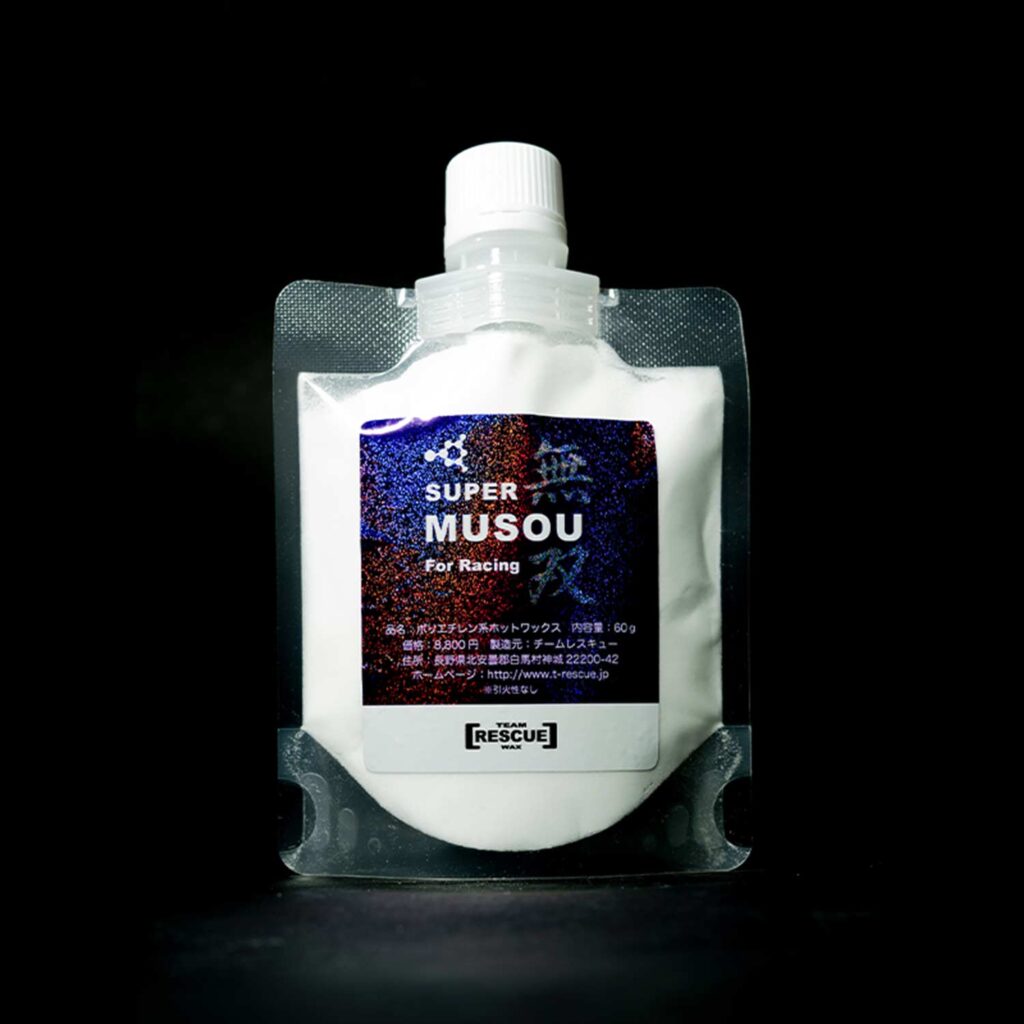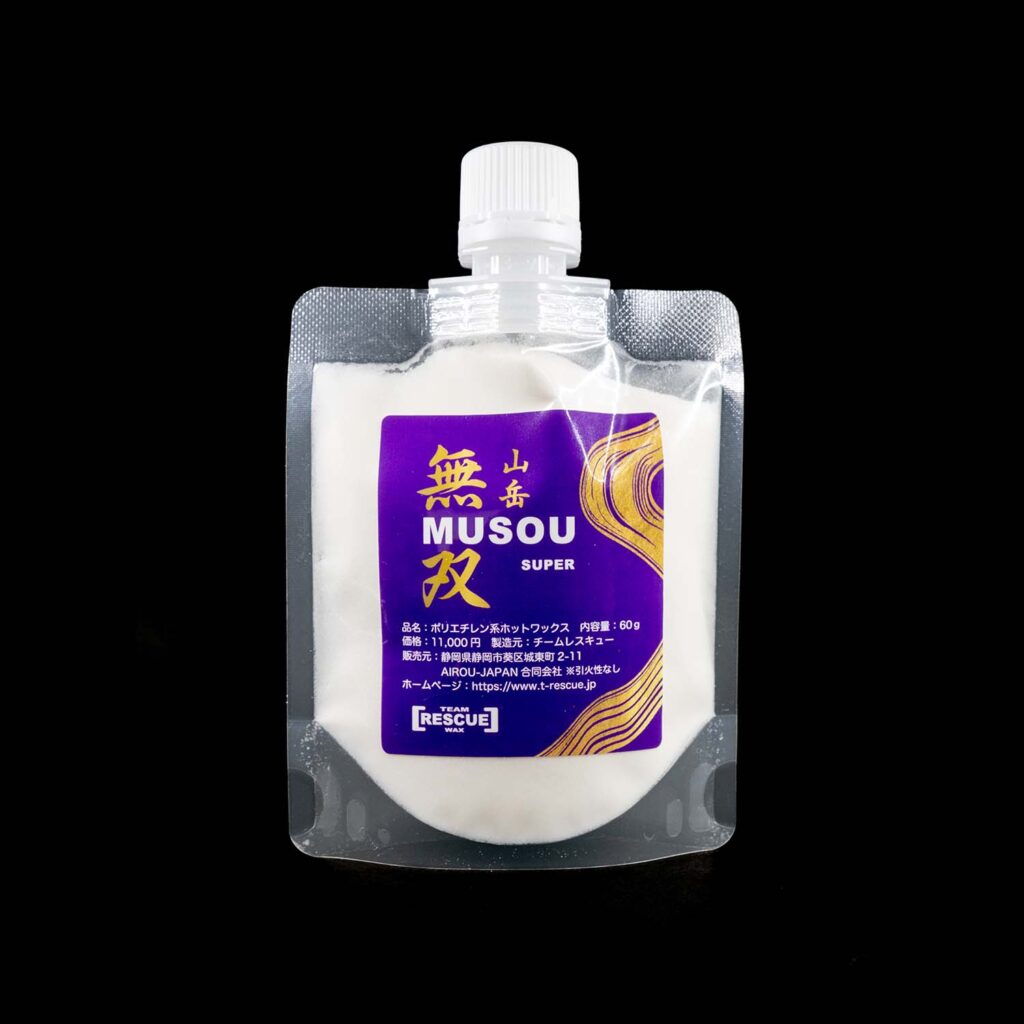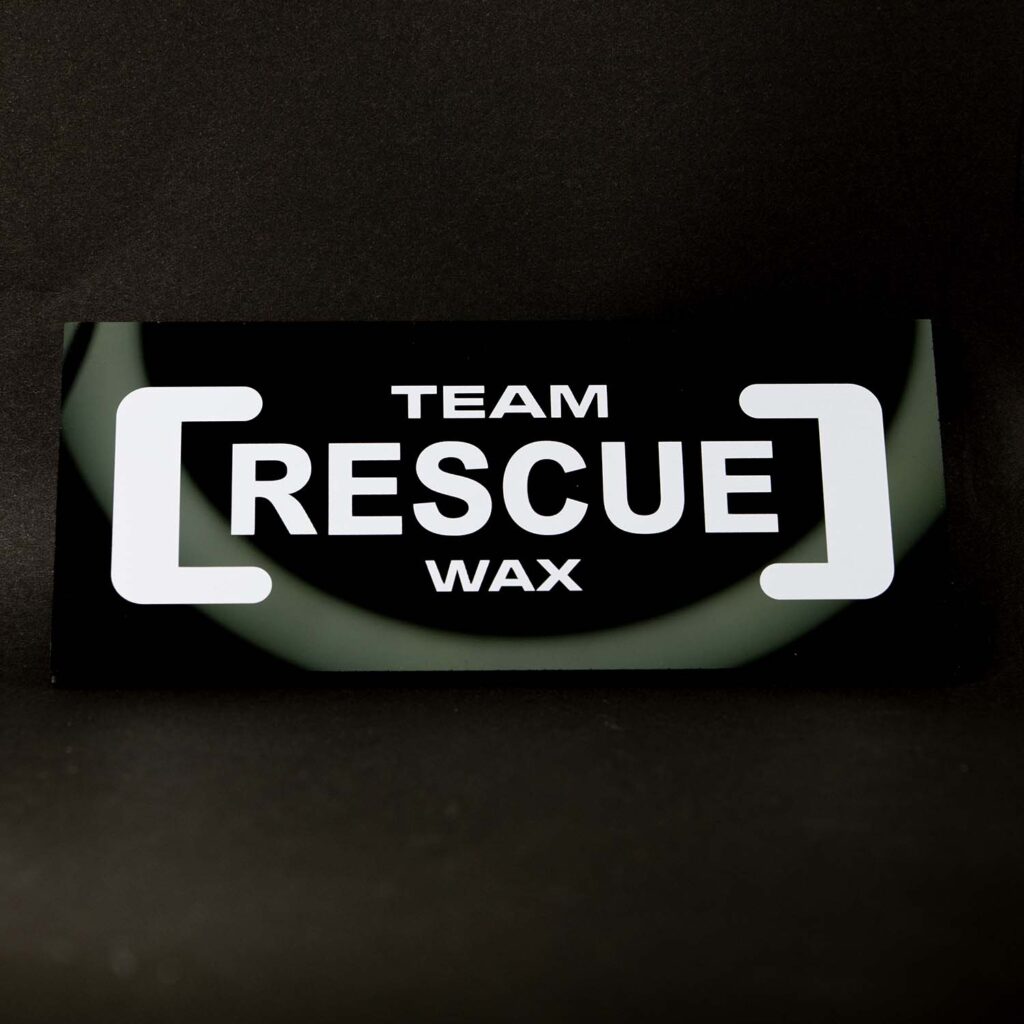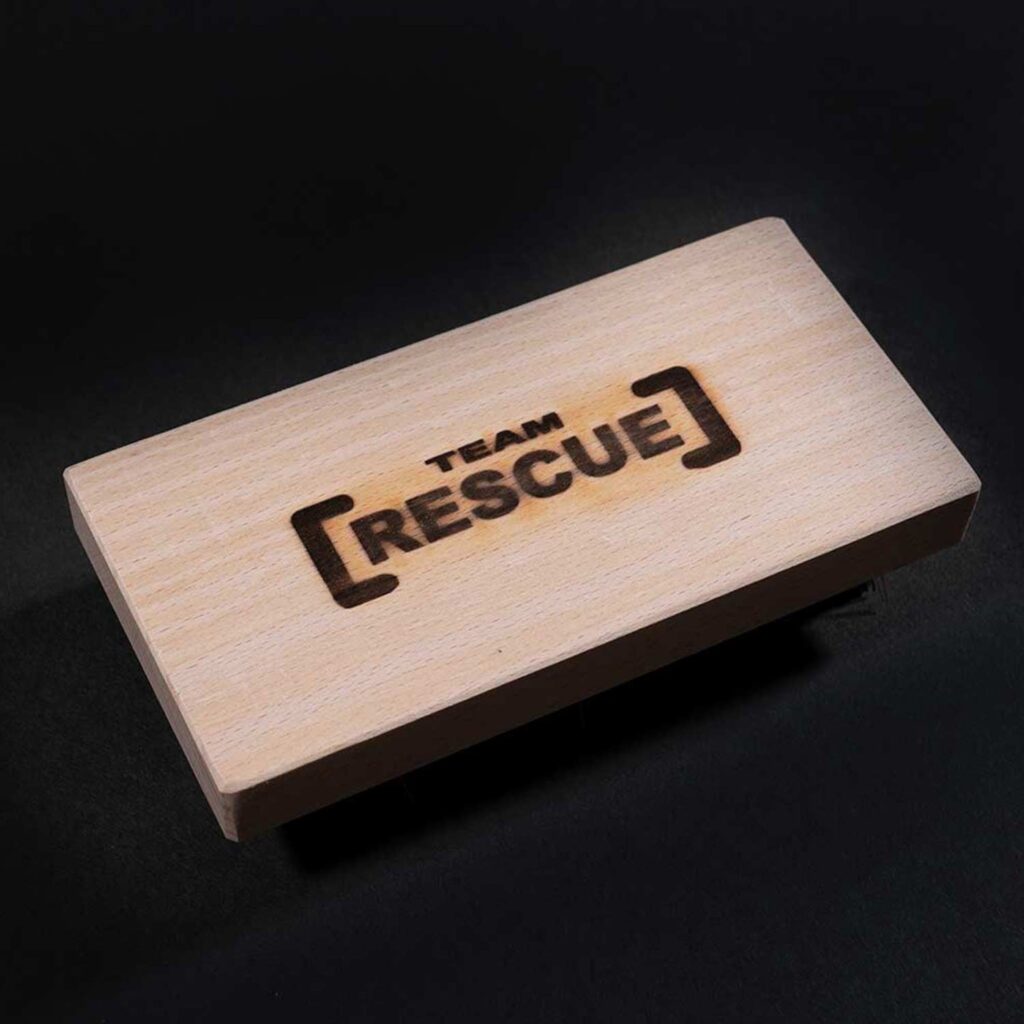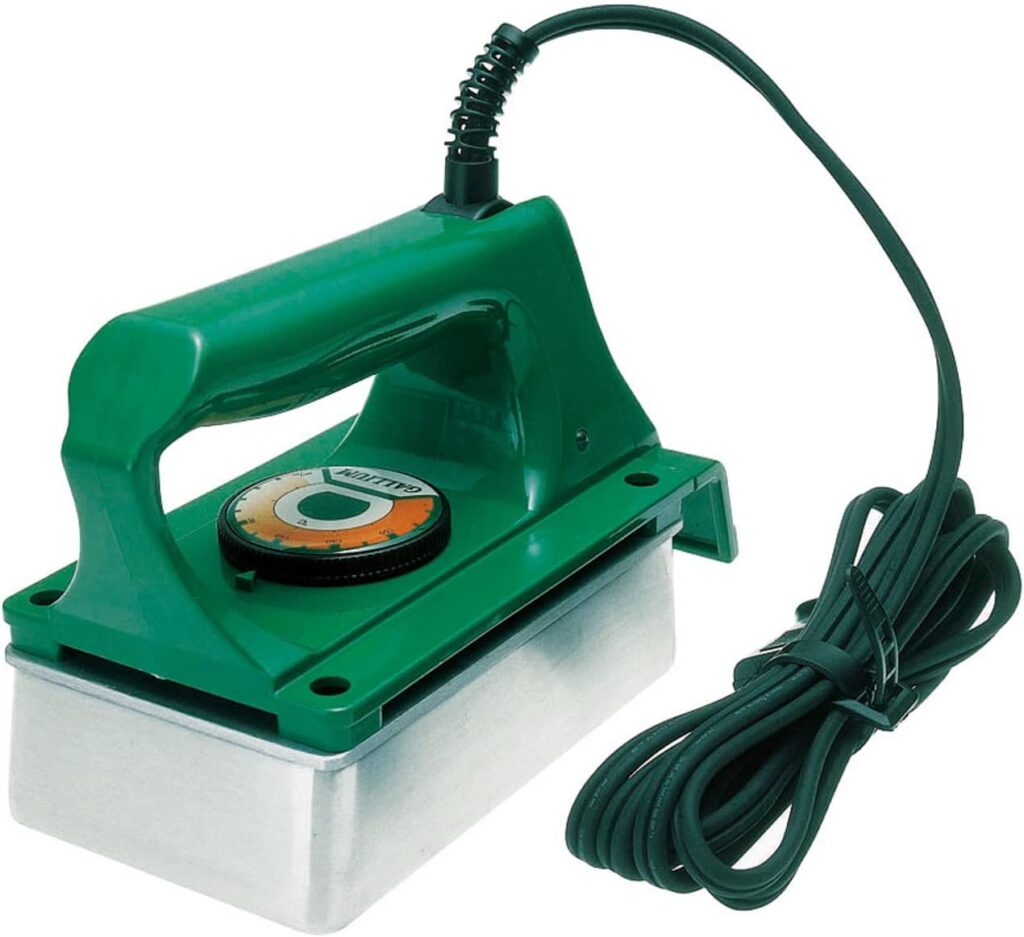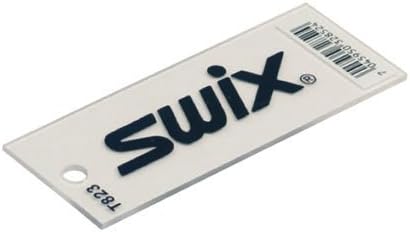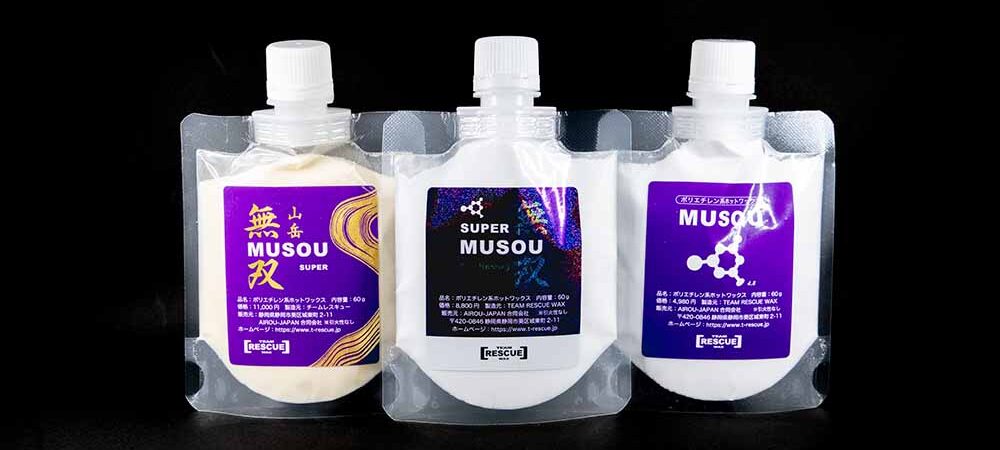
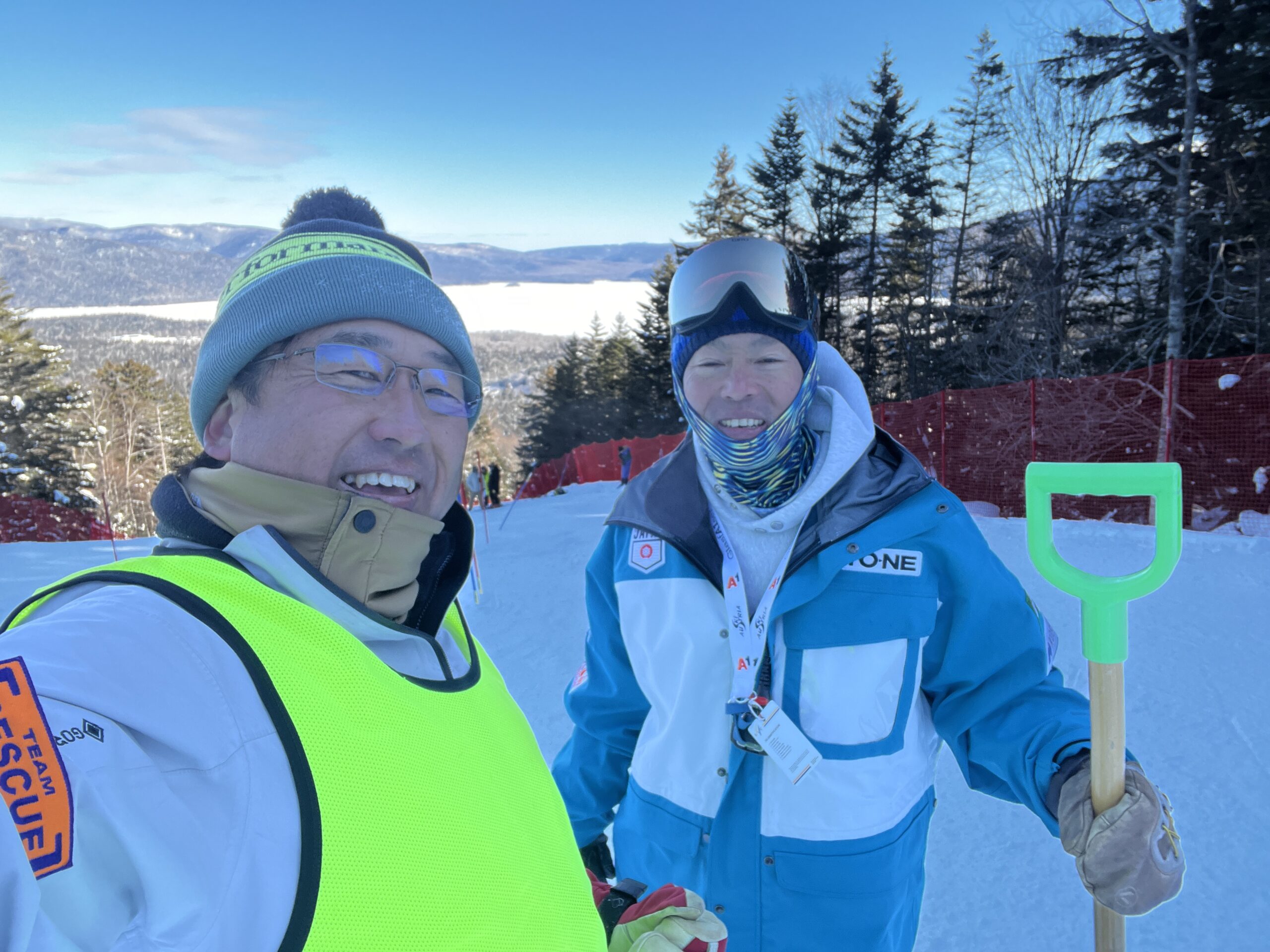
“I’m here to share insights about Super Musou, drawing from my extensive experience applying and tuning it for National Team members. As waxing experts often say, the art lies in ‘how to create a gliding base that slides.’ The Musou series embodies this philosophy, focusing on how to make the base of skis and snowboards – the part that interacts with the snow – glide effortlessly, maintain a high state of slide, and ensure protection. The versatility of this polyethylene coating allows for variations in application techniques and usage, altering glide performance, durability, and protective qualities. This makes one type of wax (coating) adaptable to a wide range of users, which is a distinctive feature of our product.”
The best-selling wax in Japan for the 2023-24 season, 'Super Musou'
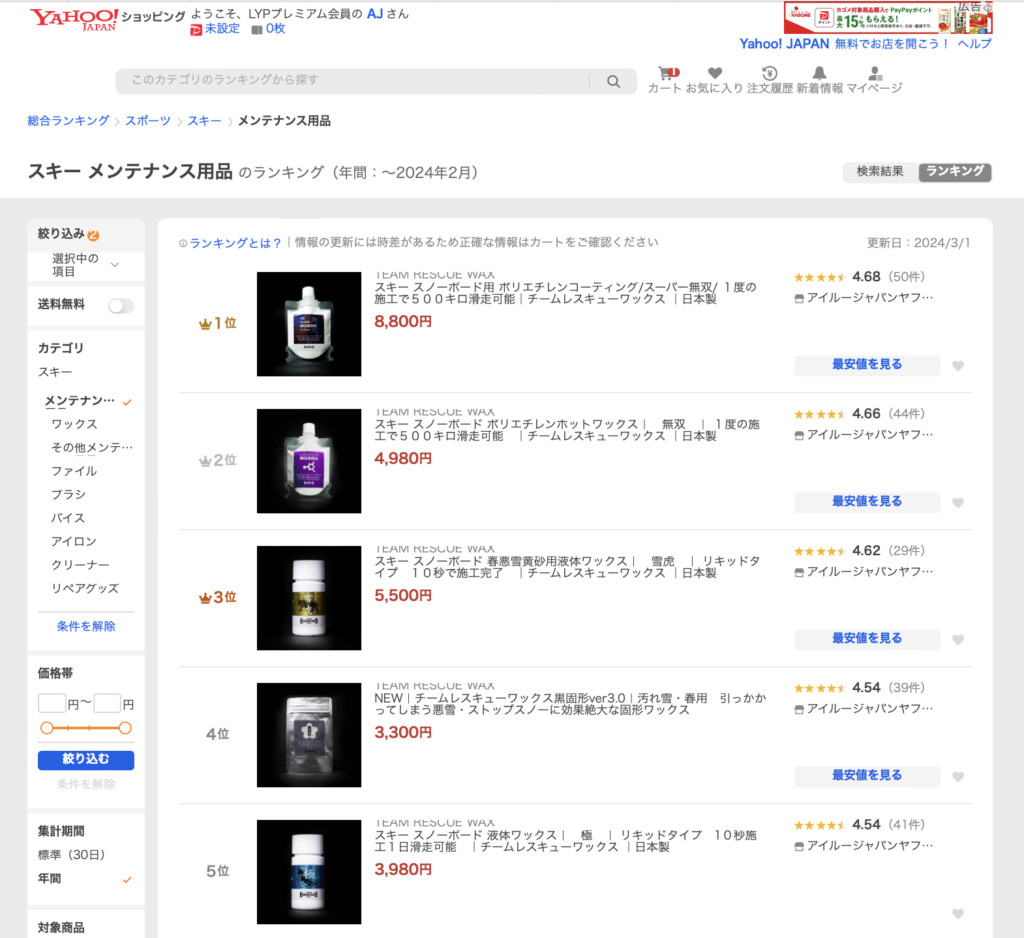
For the 2023-24 season, the most sold wax for skiing and snowboarding was Super Musou, ranked first, followed by Musou in second place. Freeing you from the hassle of traditional waxing, this easy-to-apply, season-long durable coating fundamentally changes the glide of skis and snowboards. The most involved wax experts will introduce how to use this transformative wax, along with insights directly from the field.
Collaboration with Athletes
Super Musou is currently used by a wide range of users including directly supported athletes, general customers, and athletes supported by Musou Specialist certified stores. It is used in Alpine skiing, snowboarding, cross-country skiing, slopestyle, mogul skiing, and halfpipe, and has achieved podium finishes in national and international competitions.
Precautions for Coating
For those who have tried Musou and felt it didn’t glide as well as paraffin or didn’t meet expectations, nearly 100% of the time, the issue lies in the application method.
Please pay attention to the following three points: ① Both your skis/snowboard and the iron used should be flat. Cheap irons may not be truly flat, leading to less contact and ineffective application. Solution: Use a recommended iron. Also, check if your board is flat, concave, or convex before application. This helps predict whether it will be easy or difficult to apply the wax.
② As a base treatment, ensure no paraffin wax is present before applying Musou. Even new boards might have been waxed as a final finish. Always remove any paraffin wax with a remover before application. On sintered or P-TEX bases, known for their molecular polyethylene surfaces, paraffin wax trapped in fine grooves might not be completely removed. In my case, I use a remover about five times before applying Musou two to three times to fully replace it with Musou. Musou has a cleaning effect that helps lift old wax with heat. If the scrapings are sticky or black, it’s a sign of this.
③ Iron temperature: While we suggest setting the iron around 140 degrees as per YouTube tutorials, Musou actually melts at temperatures above 105 degrees on the iron surface. The dial on your iron is merely a guide, and the actual temperature is often lower. In my experience, using a non-contact thermometer, the worst iron only reached 68 degrees at a 140-degree setting. We recommend using a recommended iron or a thermometer to measure, or set it to the highest temperature and adjust down when you see smoke; this should be a good guideline. Also, Musou should liquefy instantly (within 1 second) when applied with the iron. If it appears white and flaky, it means Musou hasn’t adhered to the base, and scraping it will remove everything, leaving nothing on the base.
The most basic application method
As introduced in the following YouTube video, if you’re not accustomed to it, please try this method. Especially, those who compete should take note. Whether you are working with skis or snowboards, the extent to which they are cooled or warmed, as well as the temperature of the workroom, matters. For the easiest workflow, try applying the wax every 30 cm. For snowboards, divide the 30 cm sections further into left and right.
Sprinkle Musou, melt it with an iron once → move the iron in the direction of progress (in my case, I move it about 10 cm per second without stopping my hand) → apply Musou to both left and right sections of the ski, and after applying, ensure it has melted and turned translucent. Scrape immediately after placing the iron. If there are uneven areas, iron once more and scrape immediately again. It’s OK to scrape off a considerable amount.
The liquefied Musou will adhere to the base, and scraping allows only the unnecessary parts to be removed. It’s fine to scrape until it’s quite thin. This is because creating a sliding base involves the hardest part of the base, the part that comes into contact with snow, integrating with Musou.
Musou can glide for hundreds of kilometers in this thinly created, sliding state. Of course, the distance varies depending on the conditions, such as top athletes continuously skiing on ice runs, but even then, it allows for several days of skiing. For example, during a trip, it’s no problem not to do a hot coating (hot wax) for a week. Moreover, competitors can achieve even higher glide performance and prolong the life of Musou or create a gliding state even without Musou by using other Team Rescue Wax products according to the snow condition right before skiing.
Product Lineup

Also compatible with structures
The Musou series is also compatible with structures. In my experience, it matches well with structures from 0.04mm to 0.06mm, and it can also finish cleanly depending on the flatness of the board even with smaller structures. Additionally, there’s also the option of a dimple structue.
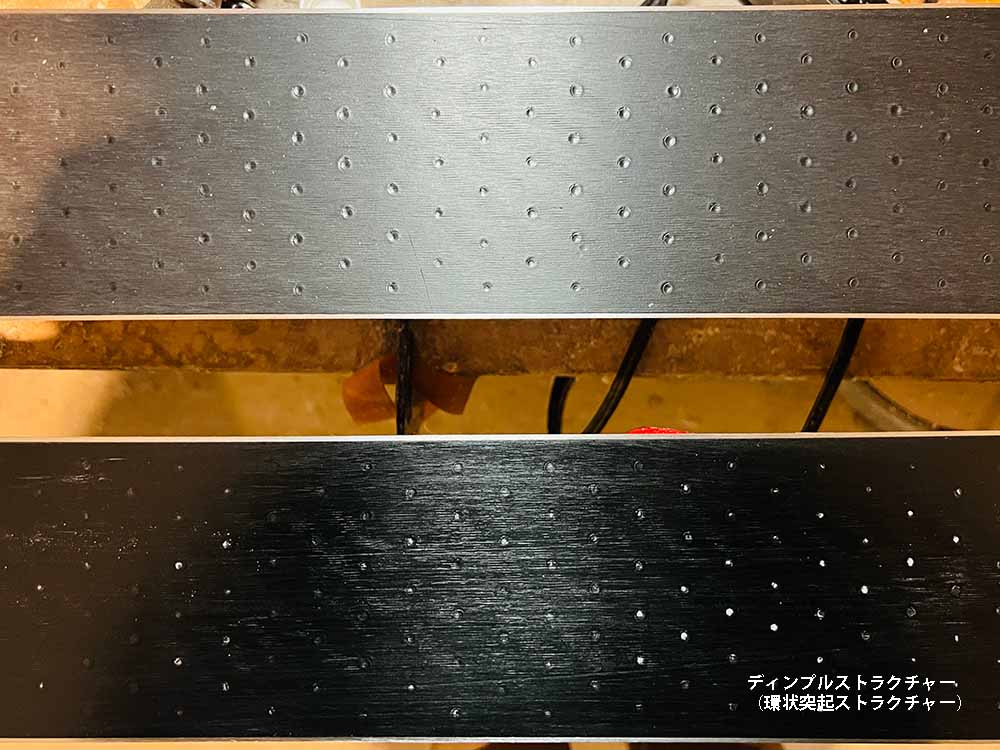
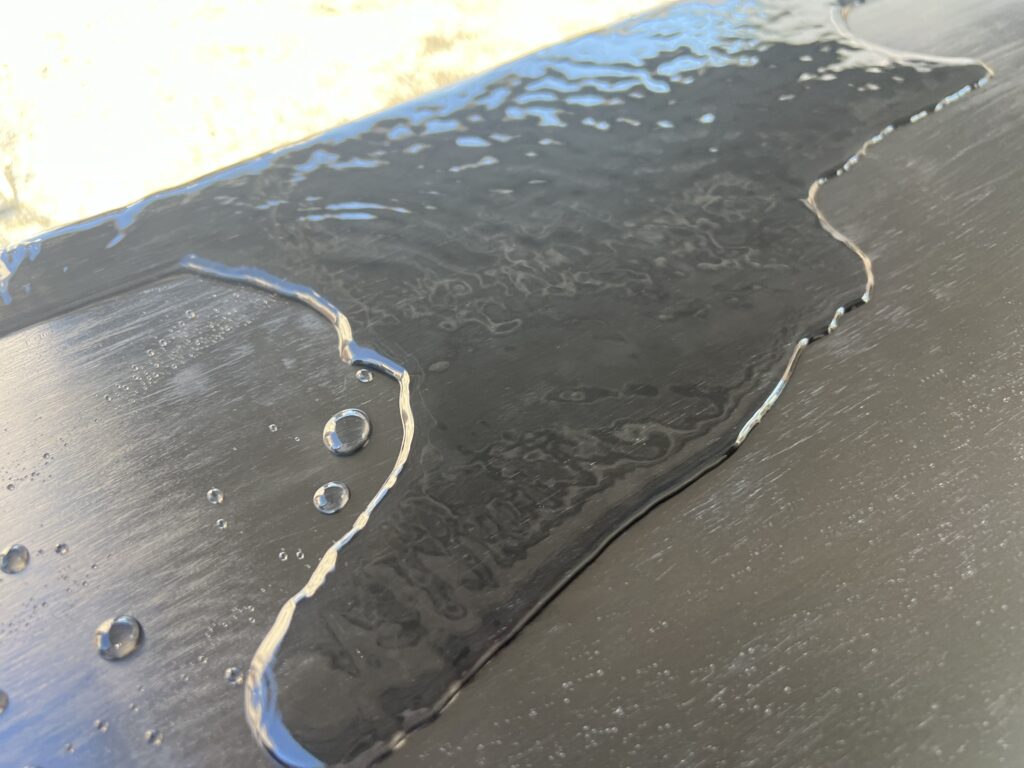
Possesses both hydrophilic and hydrophobic, as well as oleophilic and oleophobic properties.
Polyethylene coating boasts excellent water-repellent properties and is also effective at repelling oil. While fluorine is known for its hydrophobic properties, both hydrophilicity and hydrophobicity are important, as they both contribute to the effect of shedding water. By possessing the ability to repel and shed both water and oil, it prevents dirt from adhering and maintains high glide performance even in wet conditions.
Tips for Applying Wax to Snowboards and Fat Skis
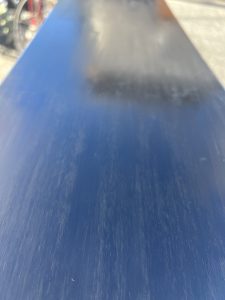
nowboards and fat skis often have unique shapes, with parts that aren’t flat or are indented, making them difficult to wax. Sometimes, these challenges are insurmountable, and a certain level of acceptance is necessary. For basic methods, please watch our YouTube videos. Common issues include the underside of bindings being indented due to screws pulling it in, and edges being hard to wax. Continuously applying heat to edges can cause the temperature to penetrate inside from the edges, leading to delamination. In such cases, melting the wax on the iron before applying it, using a bit more wax to fill in (although it may not melt completely and turn white), or utilizing the edge of the iron can be effective. For these reasons, Gallium irons are recommended for their ease of use.
Question from a Tune-up Shop (About Sanding)
We often hear concerns that sanding cannot be done on skis or snowboards treated with Musou. However, by choosing the appropriate grit size of sandpaper, sanding can be performed without any problems. Unlike paraffin, Musou does not have stickiness and is rather powdery, which actually makes it easier to work with compared to paraffin.
There are cases where the wax has been left on thickly or without scraping, which, just like with paraffin, can clog the sandpaper. Before taking it to a tune-up shop, it is recommended to scrape off the wax as it is or, for an even simpler method, apply heat with an iron and then immediately scrape it off. For snowboards or skis that are not flat, using a sharp 3mm thick scraper makes it much easier to scrape.
Instead of trying to scrape off the entire snowboard at once, doing it in sections can make it much more manageable. Furthermore, when the sliding surface has been properly prepared as described above, the coating is very thin, so sanding it directly should not pose any problems.
Seasonal Storage Method
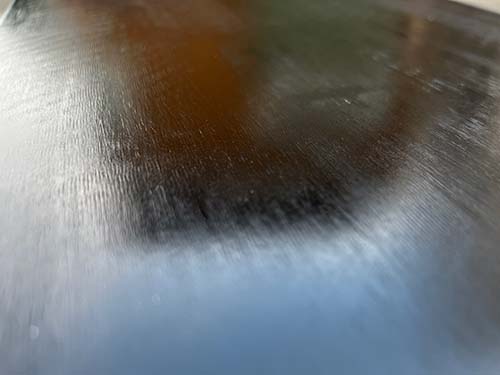
Polyethylene coating will continue to work into the next season if it is still effective after the current season. Store your gear in a cool place away from heat, and wash the edges with water to prevent rust. Applying a thick layer of Edge Wax Samurai can protect the edges from rusting and allow you to use your equipment next season without any issues. Particularly, for those skiing after March, be aware that some ski resorts use a freezing agent called calcium ammoniate, which can cause the edges to rust quickly. It’s a good habit to wash your skis with water immediately after skiing. Applying edge wax will also allow you to ski on them again the following days. *If stored in a warm place, the surface may become slightly white. This is because the polyethylene coating has slightly melted due to heat. This can happen if left in a car, on a carrier, or in direct sunlight, but you can either ski on it as is or scrape it off. Applying an iron and then scraping again will fix the issue. Note: It’s incorrect to say that it oxidizes. Paraffin oxidizes (vaporizes), causing the base to turn white, but the base itself does not oxidize. The whiteness is due to the fluffiness caused by the loss of oil (paraffin).

